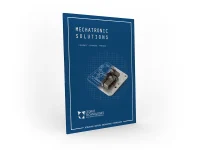Publications
Categories
- (34)
- (9)
- (3)
- (145)
- (18)
- (7)
- (5)
- (8)
- (9)
- (17)
- (2)
- (104)
- (7)
- (15)
- (7)
- (2)
- (1)
- (6)
- (155)
- (20)
- (2)
- (5)
- (111)
- (35)
- (11)
- (4)
- (59)
- (18)
- (3)
- (7)
- (62)
- (18)
- (5)
- (24)
- (7)
- (12)
- (1)
- (2)
- (2)
- (1)
- (1)
- (14)
- (13)
- (4)
- (6)
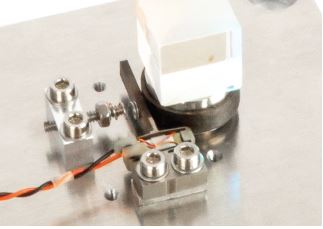
Improvement of MSPA module of stepping piezo actuator
7 June 2018
Modular Stepping Piezo Actuators (MSPA) use the stick-slip principle to combine high resolution positioning (cm). These motors provide unlimited motion in both rotation and translation. Fine mode allows precise positioning (<10nm). Since it is a module, it easily fits any existing devices requiring up to 25N of driving force with a speed up to 50mm/s. This motor module benefits the use of space qualified Amplified Piezo Actuators (APA®). It is then deemed a good candidate for severe environments such as vacuum, cryo, vibrations, nonmagnetic etc… This paper presents three technical challenges encountered for the development of MSPA product. The first one is the issue of noise resulting from stick-slip actuation below ultrasonic frequencies. The second is the miniaturization at low voltage: One is macro size (sugar cube) working at 45V is characterized, the other is micro size (grain of rice) powered at low voltage below 60V. The third challenge is the successful and reliable integration of the module within new customer applications and new Cedrat Technologies’ products.
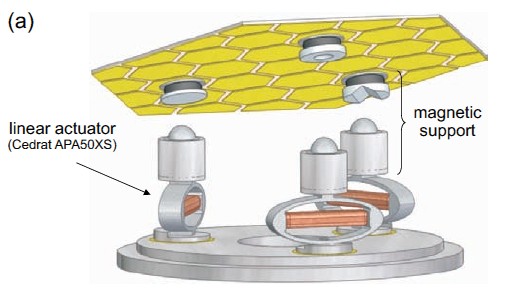
Segmented bimorph mirrors for adaptive optics:segment design and experiment
19 June 2023
This paper discusses a concept of light weight segmented bimorph mirror for adaptive optics. The segment consists of a monocrystal Silicon substrate actuated by an array of in-plane piezoceramic (PZT) actuators with honeycomb electrodes. The paper focuses on technological aspects of the segment design which are critical for space applications and describes a single segment demonstrator. The morphing capability of the segment is evaluated experimentally. The paper also discusses the local deformations (dimples) associated with the shape of the electrodes acting on the PZT array.
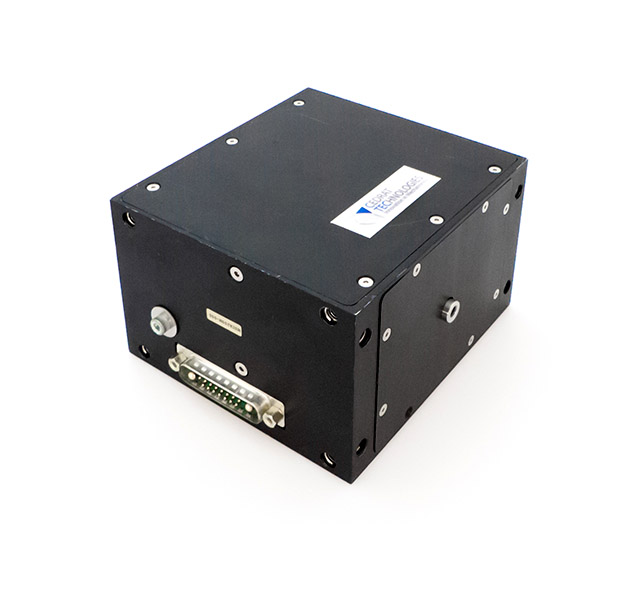
Compact, Efficient and Controllable Moving Iron Actuation Chain for Industrial Application
7 January 2016
In the field of aeronautics, some parts of aircraft engines are tricky and costly to manufacture. In the low pressure turbine very thin pieces obtained by turning require a complex support. The R&D work performed here aims at improving the manufacturing process through the reduction of vibrations and active modification of the clamping conditions. For that purpose, Cedrat Technologies has designed a new innovative Moving Iron Controllable Actuator (MICA), which is embedded on the work-piece support. In the first part, the application goals and the main particularities of the developed MICA200M magnetic actuator are presented. To be easily driven in closed loop, the force is designed to be linear with the current and independent from the interface position. The MICA200M stroke is ±2.5mm and its force constant reaches 11.6N/A for a current range of ±15A
in steady state. The nominal force of 174N for only 1 dm3 size and 3.2kg facilitates the integration and allows acceleration up to 132G in transient operation thanks to reduced 0.25kg mobile mass. In the second part, results of complete experimental characterisation are detailed. Finally, a comparison analysis is done with COTS voice coil actuators and the article concludes with the benefits of the MICA200M.
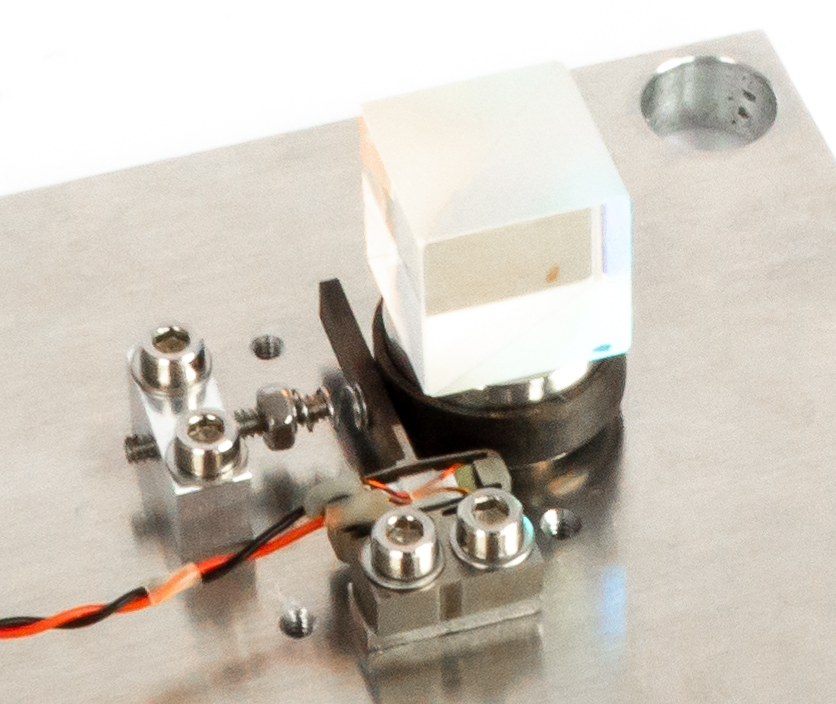
Improvement of MSPA Module of Stepping Piezo Actuator and industrial applications in piezo motors
19 June 2023
The following paper is based upon the latest improvements of MSPA Module of Stepping Piezo Actuator to provide an option for appropriated linear and rotary motional applications. Starting from breadboards, MSPA modules and stages have been developed to reach series of complex mechanisms.
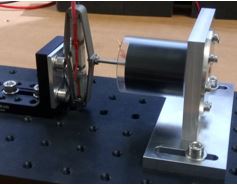
Improvement of Synthetic Jet Actuator Technology for High Efficiency
8 August 2022
SYNJET3C is a CleansKy2 development project aiming at improving the efficiency of Synthetic Jet Actuators (SJA),
with a consortium composed of major European actors to this technology which are ONERA, FRAUNHOFER,
TRISITEC, and CEDRAT TECHNOLOGIES (CTEC).
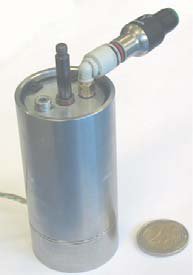
Self locking MRF actuators for dampers and latches
6 January 2008
MRF actuators are new electromechanical components using Magneto Rheological Fluids (MRF). When submitted to a high enough magnetic field, MRF switch from a liquid to a near solid body. These new developed MRF actuators were developed in order to reach three aims: to offer a blocking force at rest which can be strongly reduced by applying a current, to provide an electrically-controllable resistive force over a stroke of 30 mm, to perform the control of the force in a very short time, typically in a few milliseconds.


